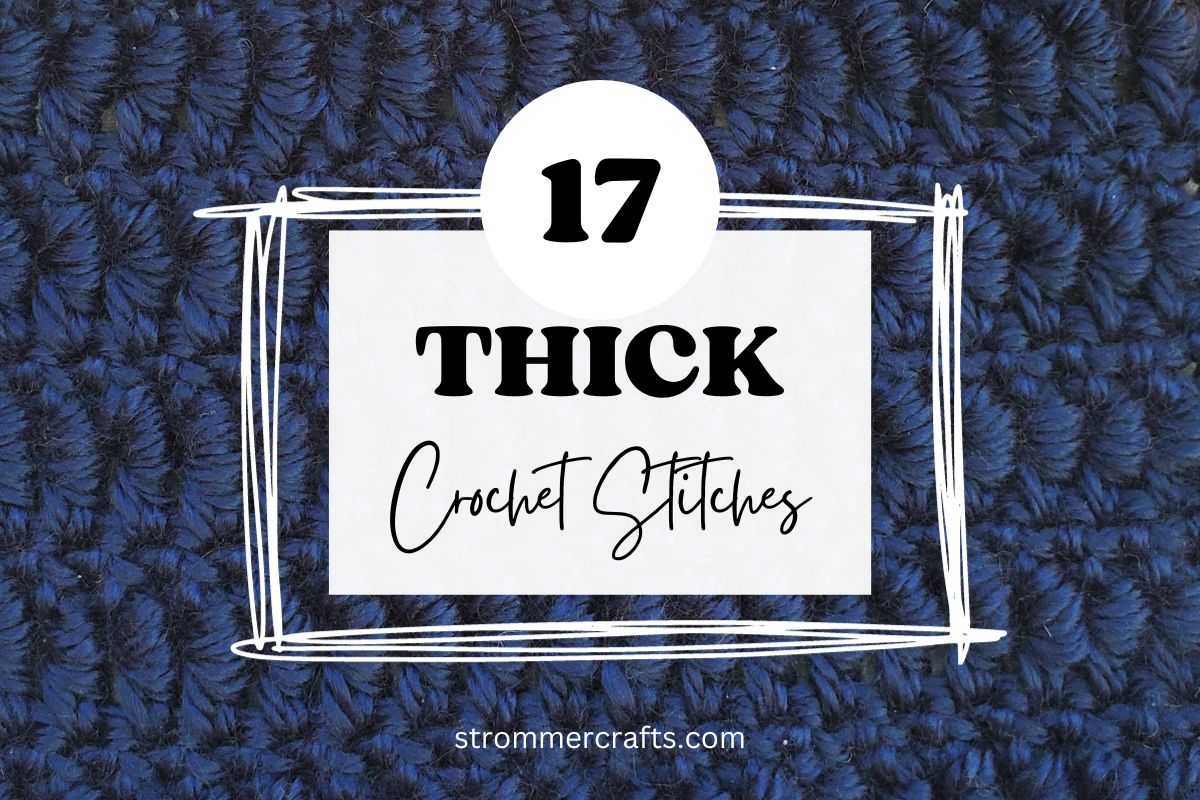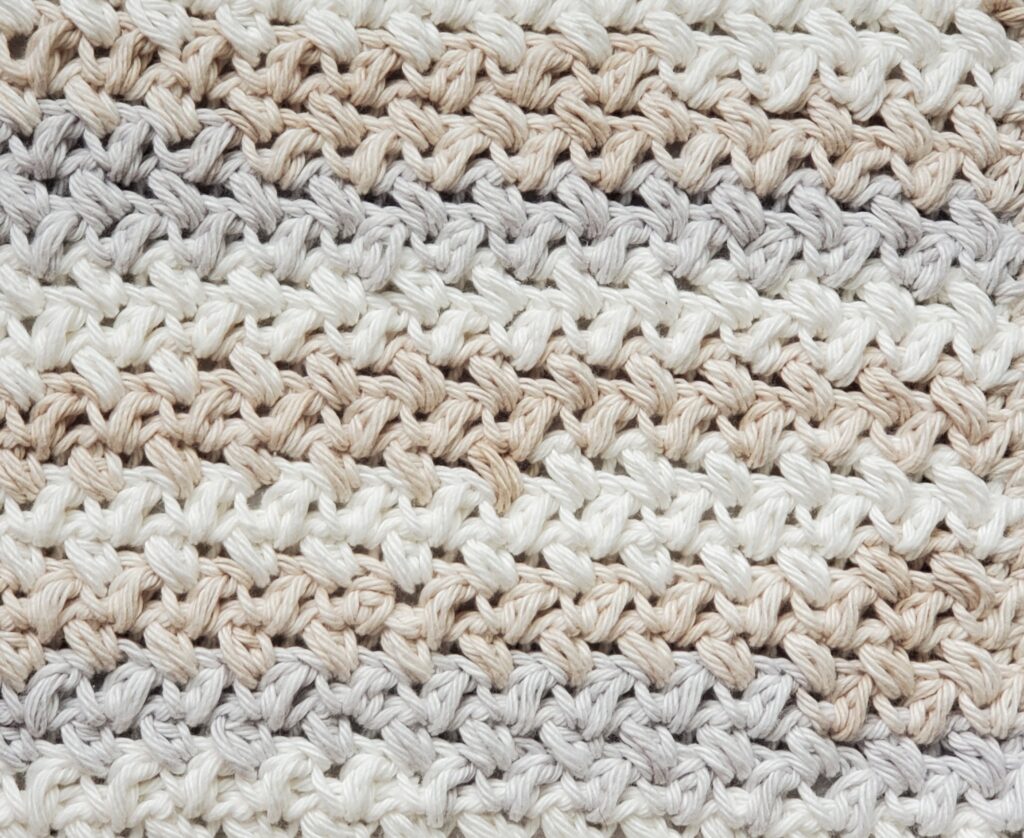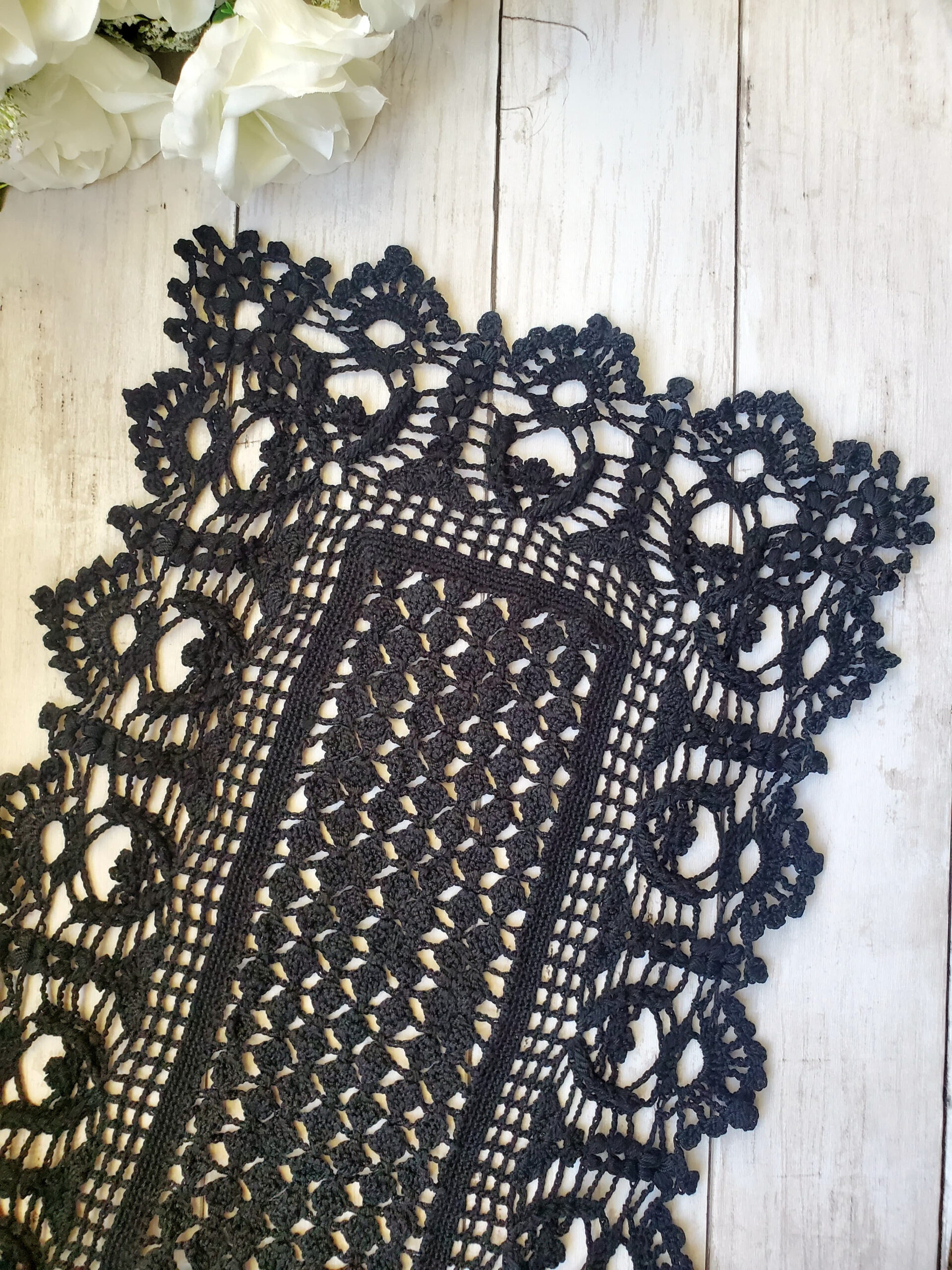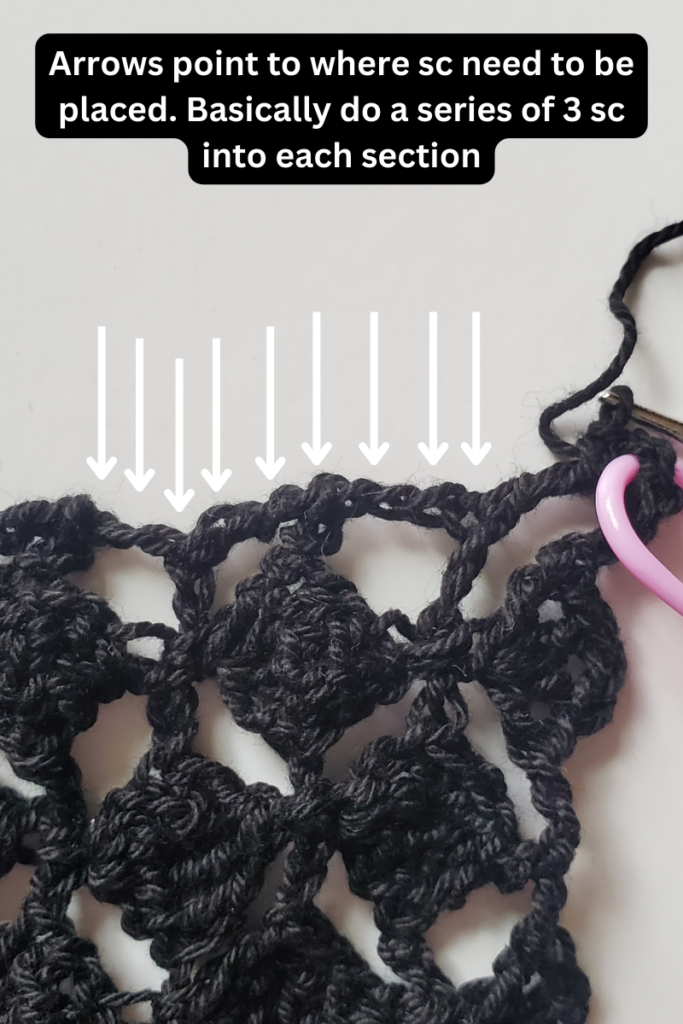17 Thick Crochet Stitches to Try for Your Next Project
Hello everyone! Today, I’ve compiled a list of 17 Thick Crochet Stitches that will add warmth and coziness to your next project!
As November brings colder weather, I’ve been thinking of ways to create denser, chunkier fabrics in my crochet work. While using thicker yarn is an obvious choice, sometimes we want to use what we already have on hand or avoid buying new yarn.
So, I’ve put together a collection of thick crochet stitches that can help you achieve a warmer hat, blanket, scarf, or whatever your heart desires!
Many of these stitches use layering effects, multiple yarn overs in the same stitch, or crocheting around stitches a row or two below.
Enjoy the warmth and texture these stitches can bring to your crochet creations!
Related Posts:
Please note that some of these links are affiliate links. That means that if you click on these links and make a purchase, I may receive a commission at no extra cost to you. You can find more information about our disclosure policy here. Thank you for your support.
#1 Puff Stitch
Yarn Pictured: Mainstays 100% Cotton Yarn in Daylily Pink
The puff stitch is one way to help thicken up your crochet project. The puff stitch creates a raised, textured, “puff,” and is often added for extra interest or dimension. The technique involves yarning over and inserting the hook into the next stitch (usually 3, 4 or more times), and pulling through all the loops at once.
#2 Popcorn Stitch
Yarn Pictured: Red Heart Super Saver 4 Medium Acrylic in Dusty Gray
The popcorn stitch is a fun way to add density by creating little round balls that look sort of like popcorn kernels. These little “popcorns” are great for making the cutest blankets and baby items. To crochet a popcorn stitch, begin by executing a set number of double crochets, usually five or more. After the final double crochet, remove your hook from the loop, insert it into the first double crochet, retrieve the loop from the last double crochet, and pull it through.
#3 Bullion Stitch
Yarn Pictured: Yarn Bee Soft Secret in Navy
The bullion stitch, also known as the roll stitch, creates cute, little ‘coils’ into your crochet projects. I’ve personally crocheted a few bookmarks using this stitch, and its unique texture adds an elegant touch to the work.
To do the bullion stitch, wrap the yarn around your hook (typically at least 5 times, although some patterns may vary), insert it into the next stitch, yarn over, and then pull through all the loops.
While the first two loops are usually straightforward, the following ones can be a bit challenging. To ease the process, pulling the loops away from the hook as you draw through can be quite helpful.
#4 Bobble Stitch
Yarn Pictured: Peaches and Creme Solid 4 Medium Cotton Yarn in White
The bobble stitch is a cluster of stitches (usually double crochets) that makes a ball texture similar to the popcorn stitch. However, the technique for creating the bobble stitch differs. Typically these stitches are created by double crocheting 4-5 times in the same stitch, but you hold back the last pull through for each double crochet. After the last double crochet is made, you pull through all of the double crochets to create the bobble.
#5 Jasmine Stitch
Yarn Pictured: Lion Brand Feels Like Butta Yarn in Pale Grey
The jasmine stitch is a super thick, super dense crochet stitch. It’s also one of (in my opinion) the hardest crochet stitches to make. The technique results in beautiful flower shapes and each petal is created by an alternative puff stitch technique. If you’re looking to add warmth to your project or maybe just use up a bunch of yarn fast, the jasmine stitch is the perfect choice.
#6 Crocodile Stitch
Yarn Pictured: Yarn Bee Soft Secret in Tobacco
The crocodile stitch stands out as a distinctive crochet technique, creating layers of fabric that resemble reptile or fish scales (or feathers in some patterns), providing an interesting 3D effect to your projects.
While it’s an enjoyable stitch to create, it can pose a bit of a challenge initially. The process involves crocheting a row of ‘ladders’ and then double crocheting around the rungs of the ladder row in a circular fashion.
#7 Thermal Stitch
Yarn Pictured: Peaches and Creme Ombre 4 Medium Cotton Yarn in Oasis
The thermal stitch earns its name from how warm it will keep you during those cold months! It’s a crochet stitch that is double layered, making it dense and sturdy. It’s the perfect stitch for crochet projects that are going to be subject to any sort of wear and tear (potholders, dishcloths, bags, rugs, etc.). This stitch requires you to crochet in the back loops of the current row and then into the loop of the row directly below.
#8 Waffle Stitch
Yarn Pictured: Yarn Bee Soft Secret in Cocoa
The waffle stitch is so enticing; you might find yourself tempted to take a bite out of your work (just kidding!). But in all seriousness, the waffle stitch not only resembles a delicious waffle but also promises to keep you warm throughout the winter.
Created by a combination of front post double crochets and regular double crochets, this cozy crochet stitch adds both texture and visual appeal to your projects.
#9 Basket Weave Stitch
Yarn Pictured: Yarn Bee Soft Secret in White
The basket weave stitch is a layered technique that showcases a woven texture similar to a handmade basket. To achieve this stitch, you repeat a sequence of front post and back post double crochets for a few rows, and then switch the two stitches. The result is a visually appealing pattern that adds depth and interest to your crochet projects.
#10 Alpine Stitch
Yarn Pictured: Hobbi Yarn Rainbow Cotton 8/4 in Natural White
The alpine stitch is a distinctive technique that makes a solid, warm fabric, reminding me of the imagery of trees seen from an aerial view on a mountainside. To make this stitch, you alternate between rows of single crochets and rows of front post double crochets worked into stitches two rows below. The result is a textured pattern that looks like a mountainous landscape, providing both visual interest and coziness to your crochet projects.
#11 Bean Stitch
Yarn Pictured: Peaches and Creme Stripey 4 Medium Cotton Yarn in Linen
The bean stitch is a wonderfully cozy stitch. It’s a simple pattern that creates a fabric that looks like little beans in a zig-zag fashion. This is made by making puff stitches and single crochets, it’s that easy! Plus, who doesn’t love beans!?
#12 Rice Stitch
Yarn Pictured: Hobbi Yarn Rainbow Cotton 8/4 in Beige
The rice stitch is a dense crochet pattern, similar to the basket weave stitch, but with a twist. In this stitch, the alternation between front post double crochets and back post double crochets occurs more rapidly, resulting in a fabric that resembles small grains of rice.
#13 Bead Stitch
Yarn Pictured: Red Heart Super Saver 4 Medium Acrylic in Real Teal
The bead stitch is a gorgeous and thick stitch that literally looks like beads. This yarn-eating stitch is simply made by making a double crochet and then basically puff stitching around that same double crochet.
#14 Waistcoat Stitch
Yarn Pictured: Hobbi Yarn Rainbow Cotton 8/4 in Brown
The waistcoat stitch is a dense crochet stitch that consists solely of single crochets, a surprising choice for creating thickness. The technique behind this stitch involves, instead of entering the top of the next stitch in the traditional manner, inserting the hook directly into the ‘legs’ of the next stitch.
While mastering this stitch can be somewhat challenging, especially without adjusting the hook size or maintaining a loose tension, the result is a fabric that not only appears thick but also looks like knitting. When worked in the round, the little knitted V’s align more evenly, adding a neat finish to the project.
#15 Thick Marguerite Stitch
Yarn Pictured: Hobbi Yarn Rainbow Cotton 8/4 in Petunia Pink
The thick marguerite stitch is such a cute stitch that resembles little stars (and it’s a variation of the star stitch). It creates a thicker fabric than the normal version by yarning over an extra time and helping to bulk up the stitch. It reminds me of the jasmine stitch, only much easier.
#16 Feather Stitch
Yarn Pictured: Hobbi Yarn Rainbow Cotton 8/4 in Green
The feather stitch is a fun and layered crochet technique that, after a couple of rows, mimics the appearance of feathers on a folded bird wing. The method of creating the feather stitch is similar to the puff stitch, but with a twist—your hook is inserted into different positions in both the current row and the row below. This approach results in a textured pattern that resembles the beauty of feathers.
#17 Celtic Weave Stitch
Yarn Pictured: Hobbi Yarn Rainbow Cotton 8/4 in Yellow
The celtic weave stitch is a thick crochet stitch that looks like a diagonal woven basket. Achieved by crisscrossing front post treble crochets in one row and then executing back post treble crochets in the next, this stitch creates a textured fabric similar to traditional Celtic patterns.
Other Posts You May Like:
- 7 Best Yarns to Use for Crochet Baskets
- 32 Crochet Memes for Chaotic People
- 17 Beautifully Gothic Crochet Doilies
I hope that you enjoyed this list of 17 Thick Crochet Stitches! Whether you’re working on a cozy blanket, a stylish scarf, or a snug hat, these stitches are sure to bring warmth to you and your loved ones during the colder months!
Until next time!







































